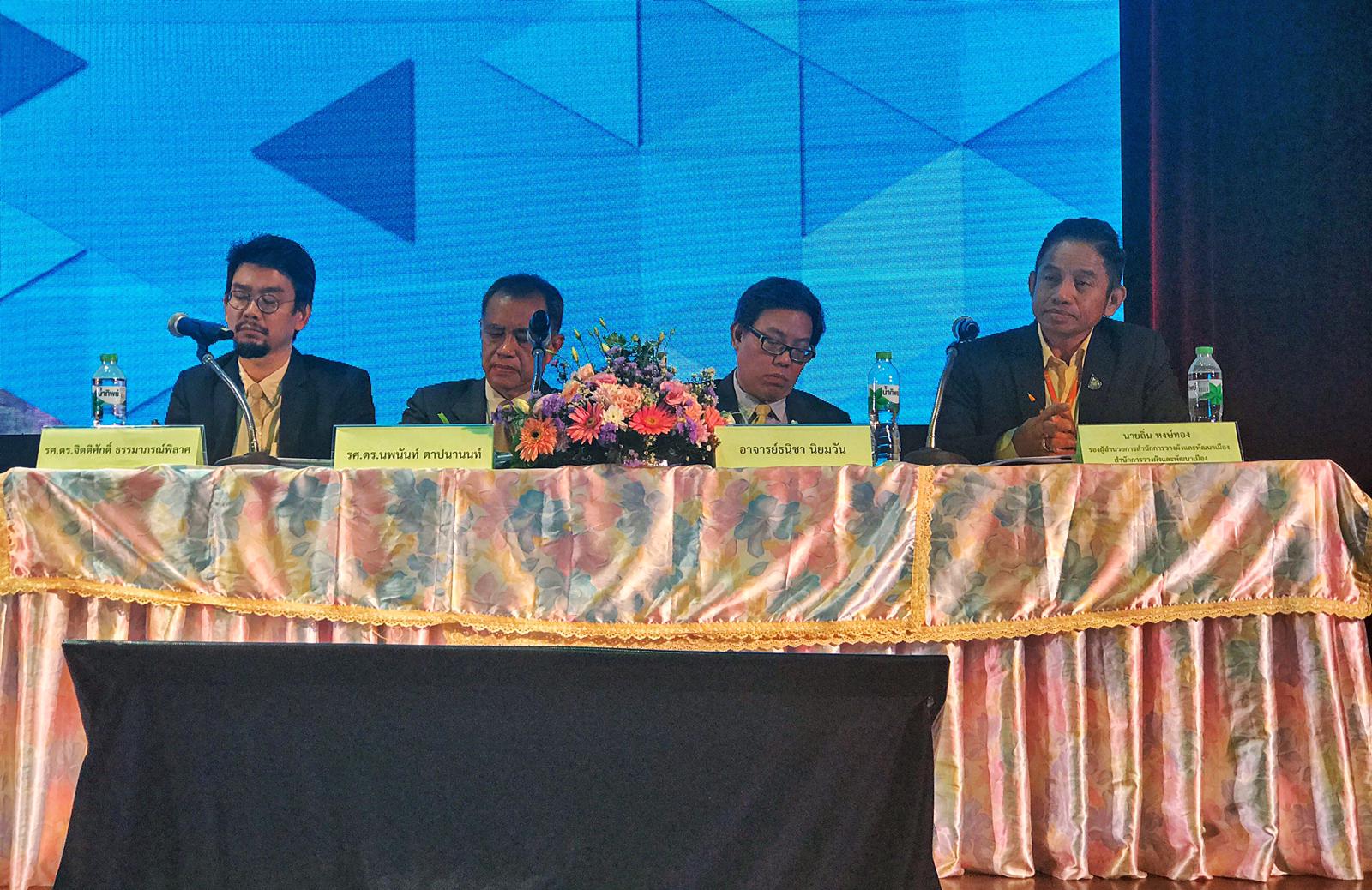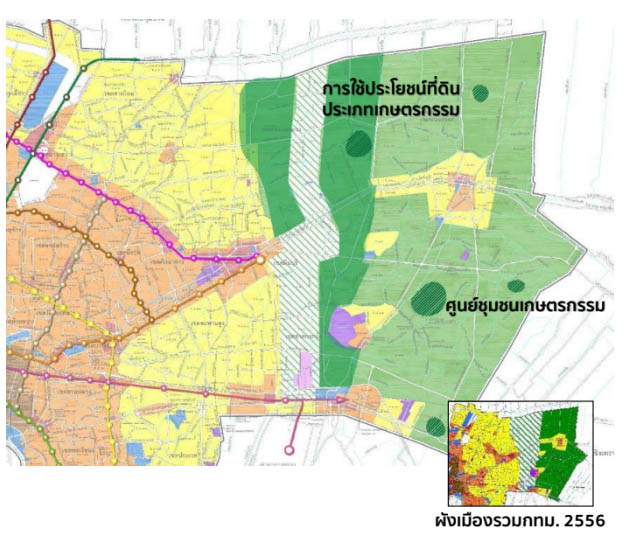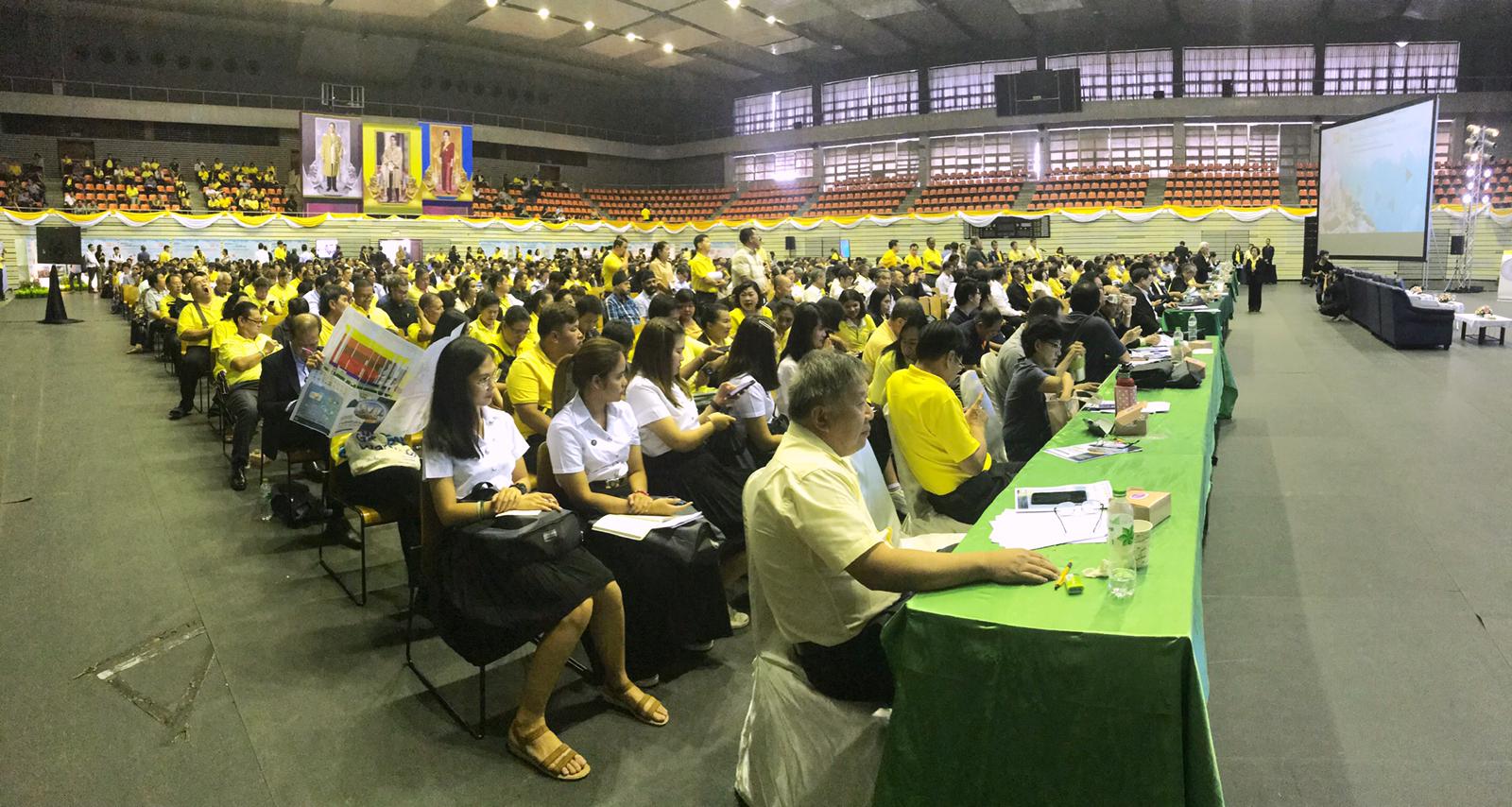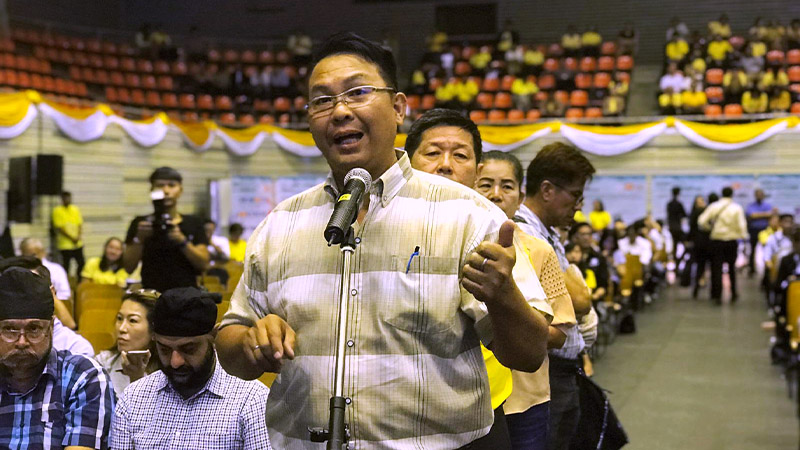One by one, they stepped up to the mic and put the city planners on blast. Not enough concern about global warming. Not enough student housing; too many malls. Corporations catered to instead of the public.
When City Hall laid out its vision for what the capital will look like in decades to come as it weathers growth, the loss of affordable housing, sinking land and rising seas, many of those who came to Friday’s hearing stood up to express frustration and disappointment with a master plan they said ignores the needs of the people.
It grew contentious nearly as soon as public comments began, with speakers openly questioned the competence of those who’ve spent the last roughly two years drafting the plan.
“The city planner’s responsibility is to take care of us, so when will you start?” a man identifying themselves as a Din Deang resident said to the suddenly sheepish city officials seated on stage. “For example, it’s been over a month and we still don’t know why the Din Daeng flat collapsed! Who’s fault did it end up being – do you even know?”

Transit and livability are key themes of the new plan, now being revised for its fourth time since first released in 1992. It touches on improving the balance between commercial and residential areas, preserving cultural heritage in the old quarter, dealing with land issues for future transportation networks and improving infrastructure, especially in flood-prone districts.
Some specifics it addresses include more public parks, housing, greener power.
As billions if not trillions of baht are earmarked for ambitious rail expansion, the plan calls for adding parking near stations in less busy areas to get people off the road.
It also includes revisions to zoning. It would relax commercial development limits in many areas from midtown to the burbs with hopes of expanding “central business districts”. Some areas that, in the last plan, were reserved for rural and agricultural conservation will be turned into floodways to help rainwater drainage.

It would relax development limits in many areas from midtown to the burbs to encourage density. Land set aside for rural or agricultural use would be cut by over half while medium-density residential would be increased by about 40 percent.
The department is currently midway through the process of revising city master plan and must hear public feedback before finalizing its details. A draft version can be found online. It’s not expected to come into effect until next year and will undergo revision again in another five years.
And in the opinion of many of those who lined up to speak at Friday’s hearing, the new plan doesn’t do enough to improve people’s lives.
Manit Sriwanichpoom, founder of Kathmandu Photo Gallery and the nonprofit Cinema Oasis, told Coconuts Bangkok he came on behalf of downtown, Watthana district residents.
“This new plan is absolutely insufficient because the problems with the old plan haven’t even been fixed yet. I believe the government must summarize and disclose what was wrong with the old plan so citizens can evaluate the changes and understand the situation and problems with past solutions,” the famed artist-activist-busybody said.
Manit said the city should decentralize development and distribute wealth, investment and power outside of Bangkok, which he believes will also help with traffic congestion. Instead of expanding already built-up areas such as Siam or Sathorn, the government should spend to develop outer metropolitan areas.
“When opportunity presents itself elsewhere, people will go there. … For example, if there are opportunities in Pathum Thani, many people who are forced to travel to Bangkok to work every day won’t have to. Instead, development can occur there,” he said.

A senior urban planning student from Chulalongkorn University observing the hearing said she believes the tense mood stemmed from the government’s poor articulation of its goals.
“City planning is all about looking ahead to the future. The plan presented today is the vision of what Bangkok will eventually, hopefully, become,” Linlanin Jaripantasakool said. “But I think it’s hard for the average citizen to see how we can get there as of now, because the steps from here to our goals are not clear.”
She said the government should be more transparent and help people understand what hoops must be leaped through to achieve the goals.
A former top Public Health Ministry official, Vicharn Minchaiynunt, questioned the utility of any plan when the road to today has been littered with discarded ambitions.
There are already plenty of measures, restrictions and laws dictated by previous city plans that have been ignored or gone unenforced by the government, effectively rendering them useless, he said.

He pointed out how development limits were unevenly applied in Bang Kapi district, which blocked Ramkhamhaeng University from building needed student dormitories while making exceptions for other private projects.
“We can’t just use laws whenever it pleases us. They should be enforced by and upon everyone, because laws and regulations do not work if everyone is not held to the same standard,” he said.
Having worked on previous city planning efforts, Vicharn also said it can be difficult to meaningfully change it because it must hew to guidelines already laid out in the 20-year national plans the military government’s new constitution requires elected governments follow.
He questioned how the people behind those plans, all the way up to the top, could be any more in touch with people’s needs.
“We can’t do anything that’s not already decided in the country plan. And does the prime minister always know what’s going on with the public? Of course not.”
Read all the plan’s details in Thai online.






Reader Interactions